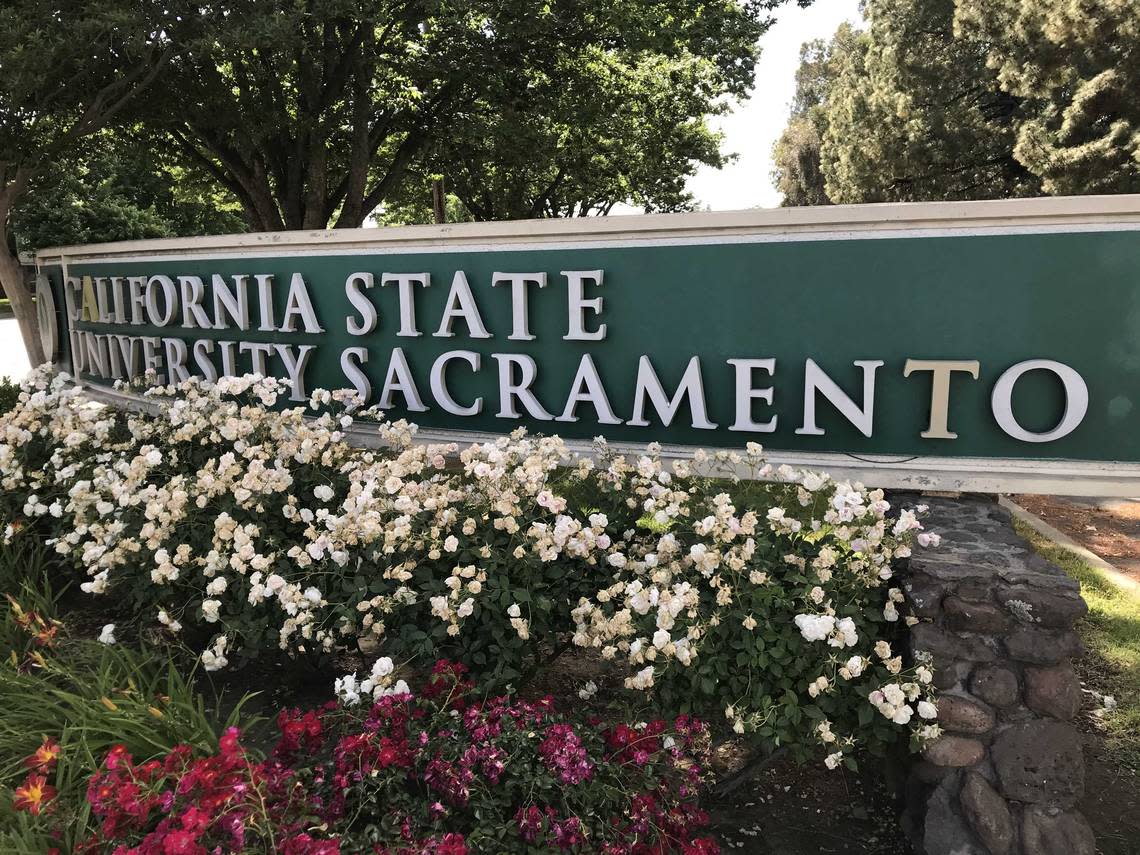Sacramento State faculty set to strike. Here’s what students, campus community should know

In the spirit of the holiday season, the labor movement keeps on giving the gift of strikes. This time, California State University faculty are the ones walking the picket line.
The California Faculty Association, which represents close to 29,000 professors, lecturers, librarians, counselors and coaches across the CSU system, is staging one-day strikes at multiple campuses this week.
Sacramento State is next up on the list, with the rolling strike scheduled to reach California’s capital city Thursday.
The labor action comes after months of negotiations over salaries and other contract provisions, such as increased parental leave, greater access to gender-inclusive restrooms in campus buildings and more staff mental health counselors to help students. The union and the university hit impasse in August after four months of bargaining. The parties engaged in mediation talks with a third-party negotiator and then submitted to fact-finding with a neutral panelist.
Only after exhausting those impasse processes can the union now stage labor actions.
“People are, like, really ready to go toe-to-toe with the administration,” said Anne Luna, president of Sacramento State’s CFA chapter. “They’re tired of hearing the message that there’s no money.”
Why are Sac State faculty going on strike?
CFA members authorized a strike last month with 95% of those voting in support. The union’s biggest demands are a 12% salary adjustment to keep up with inflation and an increase in the salary floor for the lowest-paid union members (typically lecturers and adjunct faculty).
They’ve also asked for a minimum of one semester or two quarters of parental leave — an ask that hits close to home for Luna, who had to take close to a month of unpaid leave when she gave birth three years ago.
“I had all sorts of complications,” Luna said. “It was a really stressful time, and if I’d just had the semester of paid leave, I wouldn’t have had to worry about it. I don’t want anybody else to have to deal with that.”
The union expects hundreds of its Sacramento members to walk out of their classrooms and into the streets bright and early Thursday morning. Picketing starts at 7 a.m., with strikers stationed at four different locations on campus. The main picket line will be at the main entrance on State University Drive and J Street.
The faculty will be joined on strike by members of Teamsters Local 2010, which staged its own one-day strike in November over alleged unfair labor practices, as well as students and community members, according to union leadership.
This isn’t the first time CFA has gone on strike. Faculty have previously held a strike only once, in 2011, when members walked out on two campuses to protest budget cuts. The union prepared to strike in 2016, but the university came back to the table just before the strike began.
Other strike authorizations, including during contract negotiations in 2007 and 2012, were averted by settlements with the administration.
What does the strike mean for Sac State students?
An email to students from David Zeigler, interim vice provost for student success, told students that the campus will remain open and “student instruction and other student services will continue.”
“If you have questions about your class schedules and assignments during the strike, you should check with your instructors,” the message read. “The strike should not interfere with your ability to complete your courses and graduate on time.”
Sacramento State spokesperson Brian Blomster confirmed that the university doesn’t anticipate the strike will disrupt student exams or graduation plans.
“We don’t know how many professors will actually strike,” Blomster said.
Student activist Michael Lee-Chang took issue with university leadership’s assertion that student instruction will continue.
For the last two weeks, the second-year student has been handing out fliers to fellow students and encouraging them to show up to the picket line Thursday. He works as an intern for the group “Students for Quality Education,” which receives funding from CFA.
Lee-Chang also fought hard against the CSU’s plan to raise tuition by 6% each year over the next five years, and he wants students to understand that those tuition hikes aren’t driven by faculty’s demands for higher salaries.
Through his conversations with fellow students, Lee-Chang said he learned that nursing students might need to cross picket lines to complete an important exam. If they don’t sit for the test, the students told him, they could jeopardize their degrees.
“The purpose of the strike isn’t to hurt students, but to send the message to management,” Lee-Chang said.
What happens next for CSU faculty?
Luna hopes the four days of strikes at campuses in Pomona, San Francisco, Los Angeles and finally Sacramento will push the administration to improve their offer.
But if the CSU holds firm, Luna said faculty are prepared to stage a strike in the spring if they have to — and this time, it would likely be a system-wide shutdown that could shutter learning at all 23 campuses.
“That’s a reality that we’re preparing for.”

